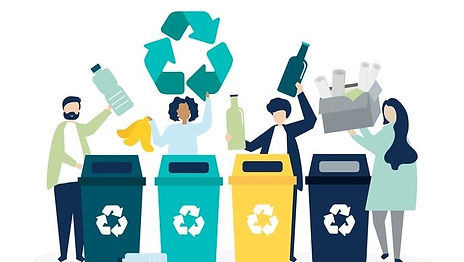ARC 30805
Intoduction to Drawing
ARC 30805
Intoduction to Drawing
Lecturer & Tutor : Mr Akmal Nordin
Lecturer & Tutor : Mr Akmal Nordin
1. Practise 5R (reuse, reduce, repair, reject, recycle)



REUSE: Reuse is to use an item again after it has been used. This includes conventional reuse where the item is used again for the same function, and new-life reuse where it is used for a different function. Always find a way to keep an item out of the landfill by keeping it in great condition, repairing or upcycling it when it breaks.
REDUCE: It means reducing your consumption or buying less. Designing items like plastic bottles in ways that use less material is another way to reduce consumption. Downsize what you purchase, opting to be more mindful of what you really need.
REPAIR: The recovery of an item to its initial function and maintenance of product shelf-life.
REFUSE: The awareness to decline goods which one deems environmentally harmful such as non-biodegradable items. Avoid single use plastics and paper products by saying no thank you, opting for reusables.
RECYCLE: Recycling is the process of making or manufacturing new products from a product that has originally served its purpose. If these used products are disposed of in an appropriate, environmentally friendly way, the process of recycling has been set in motion. Properly recycle any plastic, paper, glass or metal that comes into your life you cannot refuse, reduce, or reuse by researching your state’s recycling laws.
2. Bike more and drive less

Traditional cars put out a lot of exhaust, which pollutes the air. The transportation sector generates the largest share of greenhouse gas emissions. Greenhouse gas emissions from transportation primarily come from burning fossil fuel for our cars, trucks, ships, trains, and planes.
Cycling is usually a low-carbon way to travel but it depends on what you eat. Food intake, and the energy which it produces to help a cyclist propel their bike, is the final piece of a bike commute carbon footprint.
One thing that can be done is cities planning and implementing complete street policies—things like funding infrastructures, building protected bike lanes, and talking to citizens about what would make them feel safe. With this, cities and towns could encourage more people to ditch their cars and bike instead. This is the best way to Reduce Carbon Footprint by Cycling.
Green Transport
3. Shift entirely to zero-carbon technologies to generate electricity
Shift to sustainable, renewable and clean energy. Instead of the burning of fossil fuels to generate electricity which emits lots of greenhouse gases, we can opt for other sources which are renewable and environmental friendly. For example, solar, wind, biomass, hydro power etc. These alternative waste helps to achieve carbon neutral. More researches should be carried out to choose the best suitable way to reduce carbon emission in an effective way.





